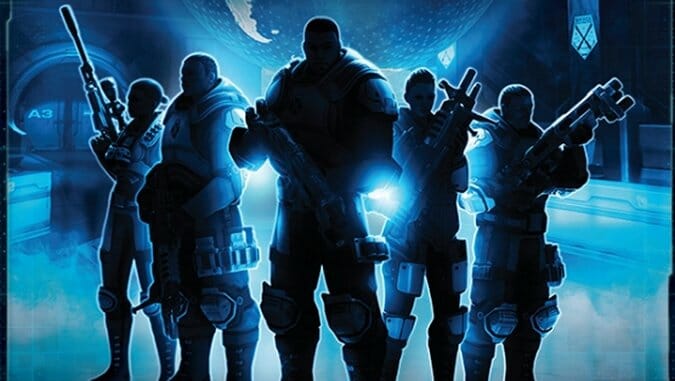XCOM Boardgame: No Controller Needed

XCOM, the boardgame, is based on a popular and critically acclaimed videogame with the same theme and similar mechanics, but extends the gameplay so that up to four players can assume different roles and work cooperatively to solve the same challenge: to hold off an alien invasion long enough to complete a final “mission” and win the game. It is extraordinarily complex, one of the most complex boardgames I’ve ever encountered, and would probably be unmanageable without the required (free) companion app to guide you through gameplay. The app tells you who needs to make which decision while also adding directions for advancing the alien invasion, all while operating with a timer that adds to the game’s intensity but also prevents it from becoming a three-hour monolith.
In XCOM, players represent the leaders of a global defense force working to slow down the pace of an invasion long enough for the game to allow the players to try to defeat the final mission, a specific and difficult trio of challenges to which the players must devote significant resources. That’s the essence of the boardgame itself: players have very limited resources for the entire game, and have to decide from the first turn how much to put into defense (lest the world be overrun), how much to put into solving short-term missions (for immediate benefits and to advance more quickly to the final mission), and how much to put into researching new technologies that might make future turns easier. Every unit deployed on a turn—soldier, satellite, interceptor (jet), researcher—costs one credit, with a typical budget for a turn starting at ten to twelve credits. With UFOs already on several continents, one or two aliens attacking your base, a short-term mission, three research tasks asking for your attention, and two or maybe three crisis cards just to make everything worse, you’d be forgiven for thinking you’re good and well screwed before you’ve even rolled a single die.
All conflicts in XCOM are resolved via dice: One to four of yours, and one eight-sided alien die that you compare to the “threat level” (from one to five) to see if your task fails automatically. For example, if you have two fighter jets (interceptors … whatever, any three-year-old is going to look at the pieces and call them planes) attacking the three UFOs currently over Europe, you would roll two of your six-sided dice and the alien die. If you get a success token, which appears on two of the six sides of each of your dice, you have destroyed one UFO. The threat level begins at 1 with your first roll, and if you roll a 1 on the alien die, well, tough tentacles—you still destroy any UFOs if you rolled success tokens, but your jets are also destroyed and you’ll have to buy them back later in the game. If not, you increase the threat level to 2 and roll again. This means every roll/stop decision is based on the probability of a desirable outcome, but the cost of a failure isn’t analogous to the benefit of a success.

Attacking specific aliens is a bit more involved, as each alien card has two symbols that correspond to symbols on each of the four soldier types—you need a soldier with that ability to fight that particular alien. Some symbols have a yellow disc behind them, which means they can only be attacked by “elite” soldiers; you can reserve one soldier in each round to a special commander card that makes that token elite for the remainder of the game or until he gets himself killed.
-

-

-

-

-

-

-

-

-

-

-

-

-

-

-

-

-

-

-

-

-

-

-

-

-

-

-

-

-

-

-

-

-

-

-

-

-

-

-

-









































